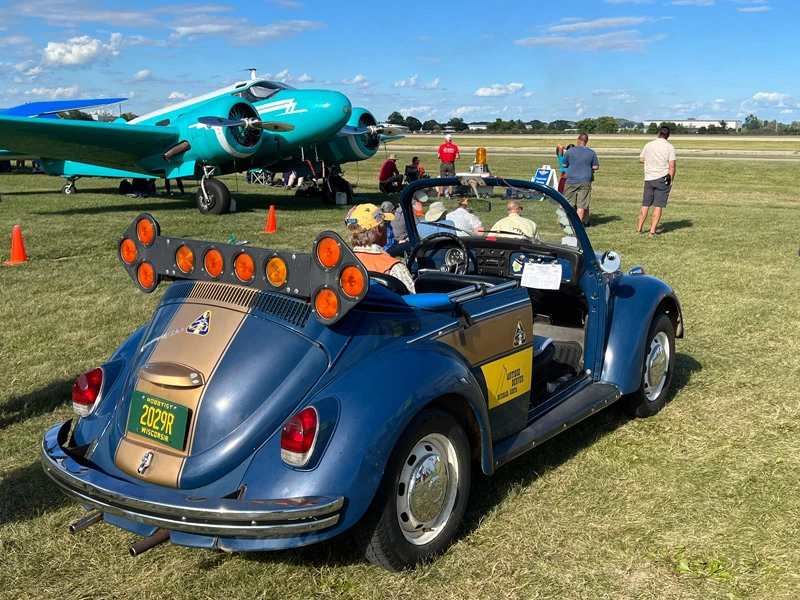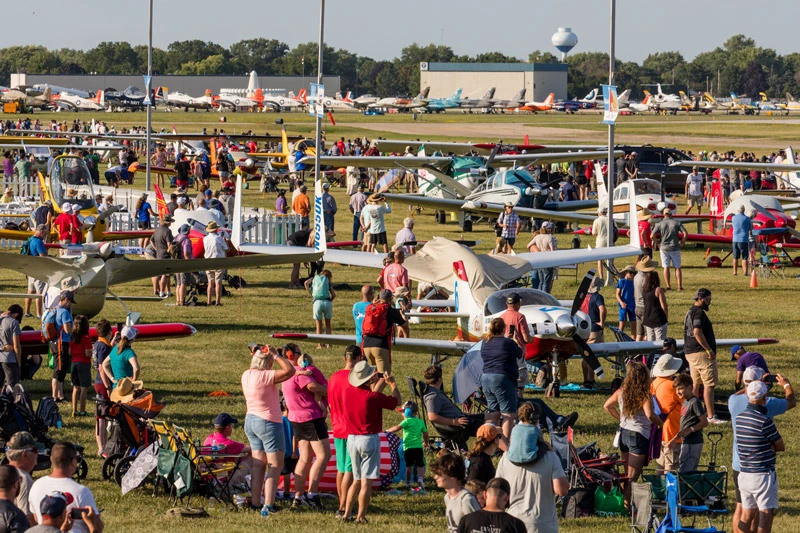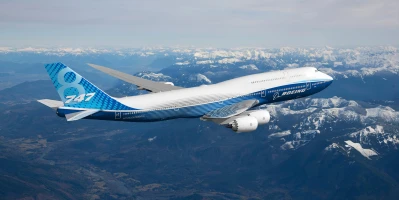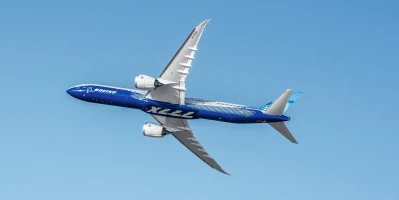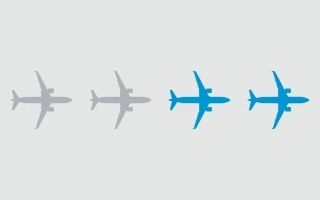good-to-know
Oshkosh—the world’s largest air show is a Mecca for aviation fans
Once a year, pilots from all over the world bring their veteran aircraft, sports planes and homebuilts to Wisconsin, U.S., to celebrate the joy of flying.
author: Andreas Spaeth | 4 mins reading time published on: 24.08.2022
author:
Andreas Spaeth
has been traveling the world as a freelance aviation journalist for over 25 years, visiting and writing about airlines and airports. He is frequently invited to appear on radio and TV programs to discuss current events in the sector.
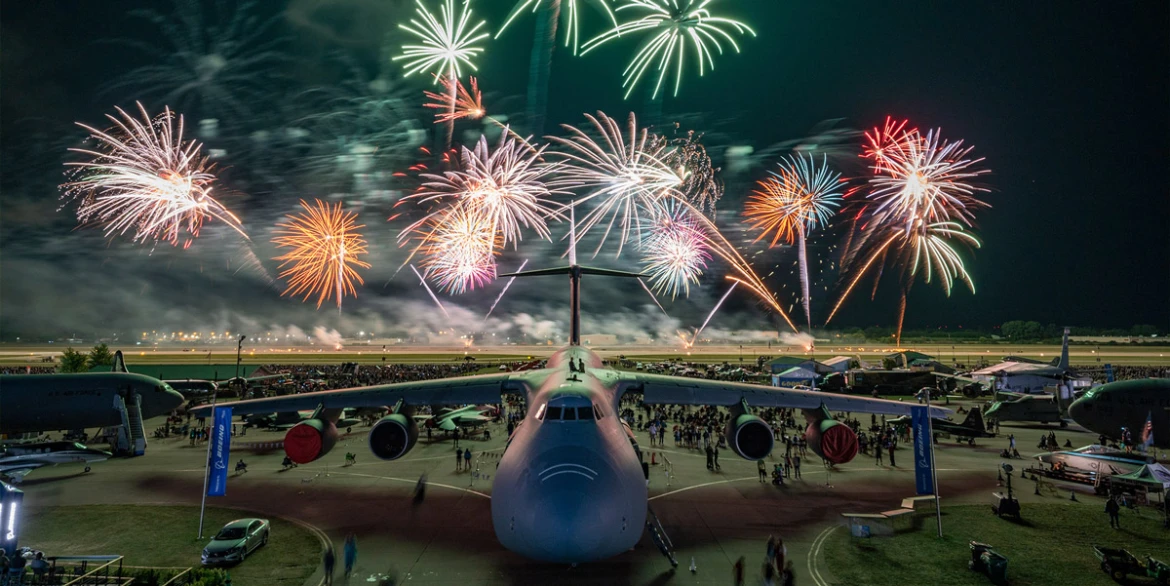
©CEAA/Andrew Zaback
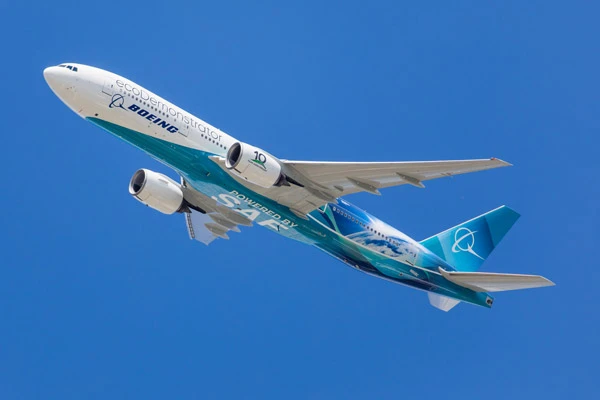

©Sebastian Thoma


©Sebastian Thoma
Test program: The tenth Eco Demonstrator is a Boeing 777-200, which was unveiled to the public for the first time in Oshkosh. Some 30 technologies for more eco-friendly flying will be tested on board.
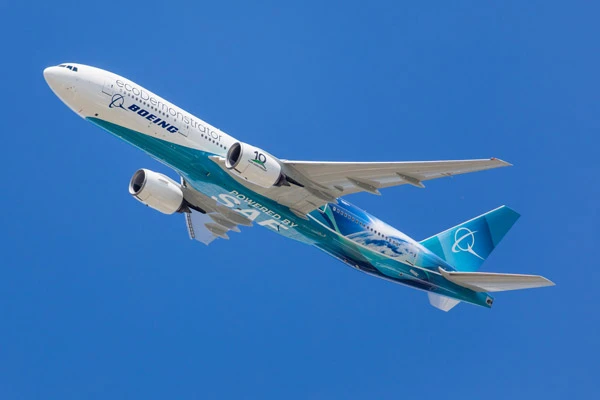
©Sebastian Thoma
Aircraft as far as the eye can see, in the air and on the ground. For mile after mile, dozens to a row. Many thousands of sports aircraft, plus hundreds of “warbirds”—historic aircraft from the Second World War that enjoy cult status in the U.S.—but also modern widebody jets, aerobatic squadrons and, more recently, air taxis. In the middle of it all is the Ford Tri-Motor, one of the world’s first passenger aircraft, built in 1928, polished to a high sheen and taking off for a demonstration flight, its engines giving their typical roar. This is EAA AirVenture Oshkosh, the world’s largest air show—a booming week-long extravaganza of joy, a Woodstock of aviation. For the rest of the year, Oshkosh is a quiet town of 66,000 inhabitants in the U.S. state of Wisconsin, located where the Fox River drains into Lake Winnebago north of Chicago.
But nothing puts Oshkosh on the world map like flying: aviation geeks from all over the country have been gathering here since 1970, most of them arriving at the controls of their own propeller plane. More and more private pilots and enthusiasts from around the world are making the pilgrimage to Lake Winnebago for this huge air show, many even flying single-engine aircraft across the North Atlantic to be there. One of them is Kathrin Kaiser, who piloted her bright orange, single-engine Grumman AA-5 Traveler here herself from her home airfield in Bonn-Hangelar, Germany. “I’ve heard so much about Oshkosh, and so I was really keen to come and see it for myself,” she says. Like many Oshkosh pilgrims, she has pitched her small tent just beneath the left wing of her plane; living on, under and in the aircraft, and sharing that experience with thousands of other flight enthusiasts, is the spirit of Oshkosh and is what delights everyone here.


©Sebastian Thoma


©Sebastian Thoma
Hybrid flight: The hybrid-electric Ampaire 337 is a converted Cessna 337. Ampaire plans to launch a ten-seater Cessna Caravan powered by an eco-friendly engine by the end of 2022.
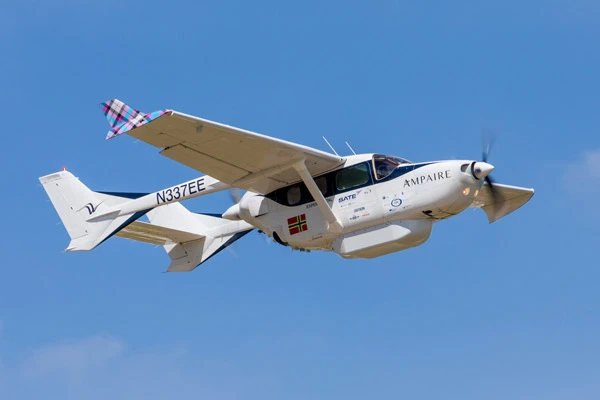
©Sebastian Thoma
World’s busiest control tower
“You have to have been to Oshkosh once in your life” is what overawed first-time visitors keep saying. It’s hard for someone who has never seen it to imagine the sheer scale of it. For one week a year, the normally sleepy Wittman Regional Airport becomes the busiest airfield in the world. The organizers must have seamless logistics in place to coordinate the special procedures for the approach, not to mention the distribution and parking of the incredible number of aircraft in the air and on the ground. There’s an important and very colorful role for a fleet of vintage VW Beetle convertibles from the 1960s and 1970s, which have been converted into the show’s trademark follow-me vehicles.
This year, the event broke all records: following the pandemic, there were more visitors than ever before—around 650,000 people—including many enthusiasts from far and wide from a total of 92 countries. In addition to a good 10,000 private aircraft, a total of 3,226 show aircraft also took part in EAA AirVenture, including many homebuilts. This is the week in which Wittman’s control tower can proudly say it is the world’s busiest control tower. And it definitely is a hive of activity: over 11 days before, during and after this year’s show, its controllers handled nearly 19,000 aircraft movements. That equates to 121 takeoffs and landings every hour the airport is open (this is not the case at night or during flight demonstrations). Nowhere else can manage that.
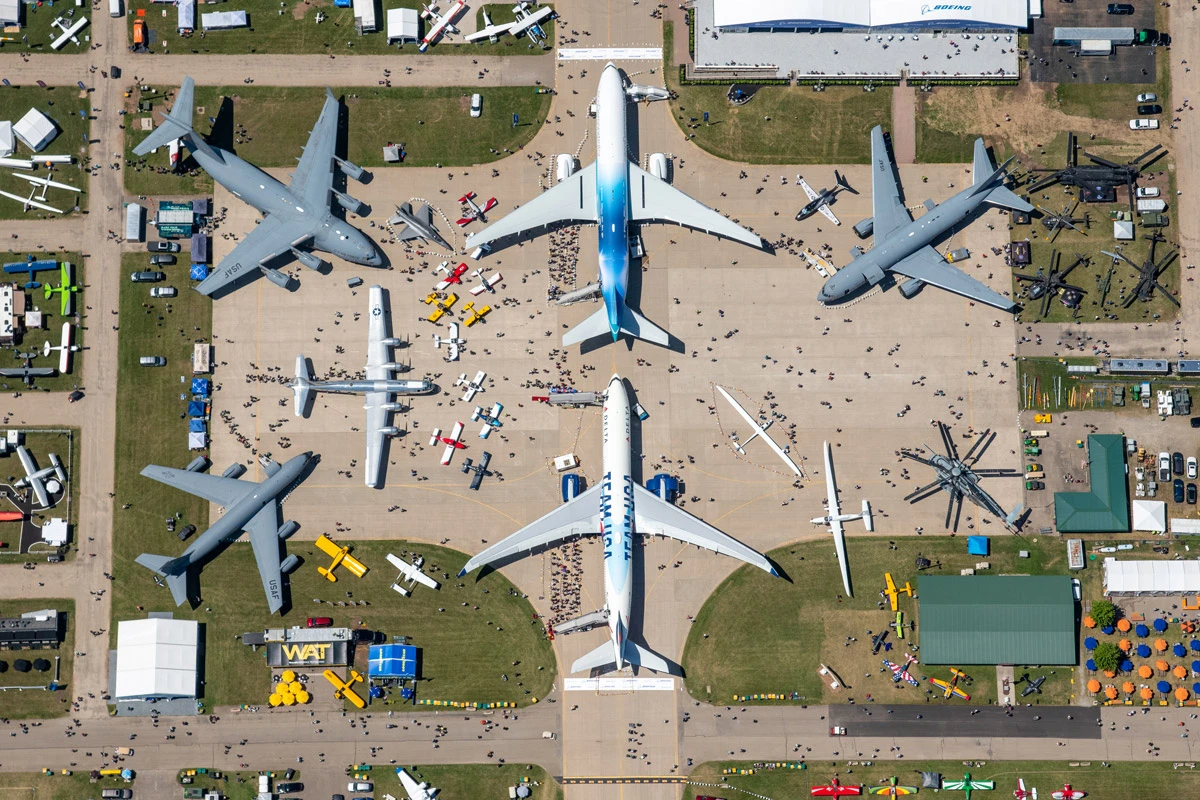
©EAA/Connor Madison
Static display: In Oshkosh, Boeing Plaza is the part of the airfield reserved for showcasing widebody aircraft. This year, the Boeing 777 Eco Demonstrator and an Airbus A330-900neo were on display alongside military aircraft.
Spectacular air shows and innovative products
Hosted by the non-profit Experimental Aircraft Association (EAA), AirVenture offers a mix that is unparalleled worldwide: it is the largest of any aviation meeting, with spectacular daily air shows—the stuff of dreams for aviation fans in Europe—lasting hours and drawing huge audiences. Many visitors are particularly moved by the two nighttime sky spectacles, when illuminated aircraft paint colorful shapes across the heavens in breathtaking maneuvers, with a grand finale that includes a gigantic fireworks display with its own air escort.
EAA AirVenture is also an industry trade show where many manufacturers, especially in the private aircraft sector from Beechcraft to Pilatus, present their latest products. With sustainability also a big topic, Boeing wanted to fly the flag and brought its latest Boeing 777 Eco Demonstrator to Oshkosh. This time, the plane was testing 30 technologies from 3D printing to UV disinfection on board, with a view to making aviation more environmentally friendly in the future. One of those technologies is the brainchild of the German company Diehl Aviation: it is said to save up to 181 kg of weight per flight by reusing water from on-board sinks to flush the toilets.
The current 777 Eco demonstrator is the ninth such aircraft in ten years. “Since 2012, we’ve tested more than 200 technologies this way, and about a third of them have made it into our production models,” says Rae Lutters, the program manager. Smaller companies are also leading the way—among them Ampaire, which also demonstrated its Cessna 337 converted to hybrid electric operation in the air at Oshkosh, said a ten-seat Cessna Caravan hybrid is also expected to be certified by 2024. Like many others, Kaiser can hardly wait to make this pilgrimage again. Almost everybody who was there will have left Oshkosh at the end of July saying the words “see you next year!”



